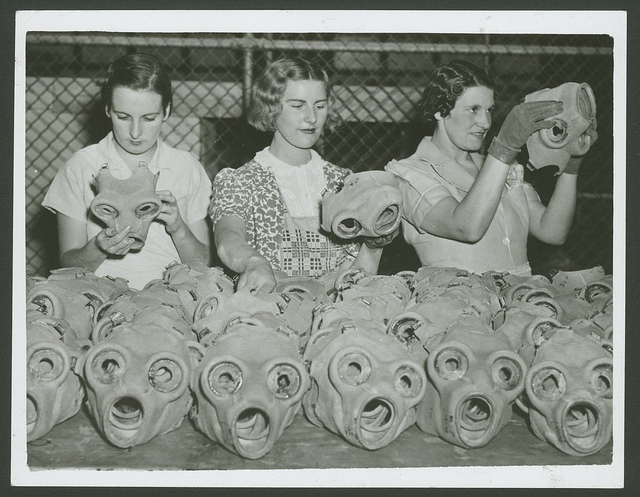If you're like many employers, you say you run your business in this order: people first, process second and profit last. But for employees and customers alike, they feel as if it's: profit first, process second, then people last. With 60% to 70% of your employees disengaged, it's not time to change the way they think, but the way you think first.
If you do, you'll make more money by putting things in the right order.
How you run your business indicates how you sell. With more agents "spreadsheet selling," just based on numbers, learning how to identify and remove root causes of customer problems has gone by the wayside. One could argue that few producers even know how to sell anything other than spreadsheets. When there are other alternatives for customers, however, spreadsheets add no real value in customers' eyes.
Toyota's definition of adding value, along with that of other companies that have adopted the principles of lean manufacturing, is the one to study when trying to improve your business and help customers improve theirs, too. At Toyota, it really is people first, process second and profit last.
Before we get to how to apply Toyota's thinking to insurance, let's study how its version of lean manufacturing made its way from America to Japan.
Early on during World War II, America was in desperate need of quality and speedy production to build machinery to fight and win the war. Tanks, airplanes, guns and submarines were in short supply when Japan surprised America at Pearl Harbor.
The U.S. government turned to the Training Within Industries program to educate American manufacturers on how to improve quality and reduce costs while increasing the rate of production. With a crisis threatening to destroy everything we knew, we developed an enlightened sense of purpose. American executives listened and changed the way they looked at people and how they built things. The principles of lean were born.
After WWII ended, Gen. Douglas Mac Arthur was given full responsibility to rebuild the Japanese economy. When he arrived, he found devastation, burned-out cities with no functional capacity and people existing on just 800 calories per day. He also discovered he had no way to distribute propaganda necessary to convince Japanese citizens about what Americans wanted to achieve.
With quality Japanese radios in short supply, MacArthur turned to Bell Labs, which turned to employee Dr. Walter Shewhart for help improving radio communications. Shewhart, who was unavailable, recommended that 29-year-old engineer Homer Sarasohn be sent to Japan, to teach statistical quality control. Sarasohn then spent four years working closely with Japanese scientists and engineers, improving their knowledge about how to best manufacture and sell goods and services.
When Sarasohn left in 1950, the reins of teaching continuous improvement were turned over to Dr. W. Edwards Deming. Deming expanded on what Sarasohn began, and lean manufacturing took hold at hundreds of companies, including Toyota, one of the many Japanese companies Deming consulted for until he died in 1993.
Today, Toyota is known for its driving principle; respect for people is the core to the culture. All decisions for improvement are made with this principle in mind. Even when it comes to reducing labor costs, respect for people is at the forefront. For example: Toyota has never laid off a single employee. It has, instead, turned to employees to improve their processes by finding wasteful steps and activities that impede value customers demand.
And when it comes to profitability, Toyota's profits in 2013, exceeded Ford, GM and Chrysler combined, even though Toyota built roughly half the number of cars.
So, how can you as an insurance agent/risk manager use the same concepts to grow and improve your business?
Quite simple:
- Improve capacity by first engaging employees in identifying wasteful activities. Then reduce or eliminate the activities. Activities such as:
- (T)ransporting something.
- (I)nventory–keeping too much or failing to meet customer demand.
- (M)otion–looking, reaching or stooping to get something that isn't in its best place.
- (W)aiting for information. How often do you wait while someone else produces material? How much time is spent waiting for loss runs, proposals, and other data?
- (O)verproducing information. For example: sending out copies of emails to multiple parties unnecessarily--emails that take time to be read by each recipient.
- (O)veranalyzing information or taking too much time to make a decision.
- Creating (D)efective information that must be redone. Certificates, proposals and routinely changing human resource policies come to mind.
- Failing to maintain a (S)afe working culture.
- As capacity improves, employees have more time on their hands. The first cost you'll reduce is overtime. That's because employees will meet production demands better. Remember, you're looking for reducing, or eliminating altogether, processes and activities that add no customer value. A secondary benefit? Employees won't feel that their valuable skills are wasted on activities they don't enjoy anyways.
- As capacity improves, share what you learned about your improvement efforts with customers and their supply chain. You'll be busy with ample prospective opportunities.
- Then offer to work with customers and their supply chain to teach them how to use what you've learned.
- Develop strategies using your new capacity to expand your business. Focus on creating opportunities that reduce risk and improve internal and external customer efficiencies. That's value through the eyes of your customer.





